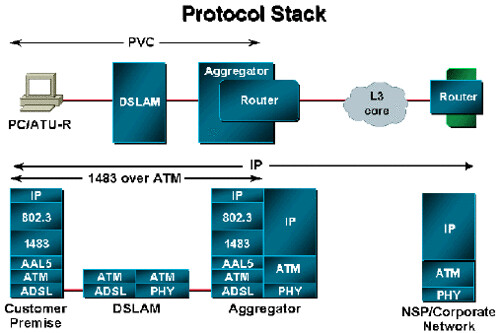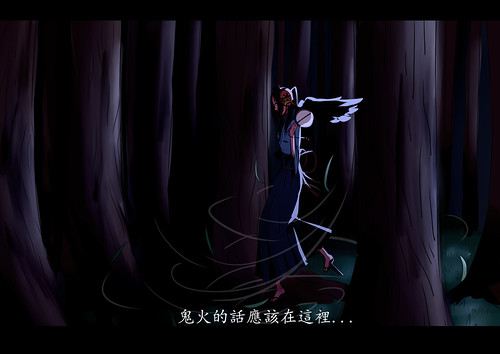Following is a description of the flow of packets.
The user's data is encapsulated in IEEE 802.3 from the PC and enters the Cisco 6xx CPE. It is then encapsulated into an Logical Link Control/Subnetwork Access Protocol (LLC/SNAP) header, which in turn is encapsulated in ATM adaptation layer 5 (AAL5) and handed over to the ATM layer.

The ATM cells are then modulated by the ADSL transmission technology, Carrierless Amplitude and Phase (CAP) modulation or Discrete Multi-Tone (DMT), and sent over the wire to the DSLAM. At the DSLAM, these modulated signals are first received by the POTS splitter, which checks whether the frequency of the signal is below or above 4 kHz. After it identifies the signals as above 4 kHz, it passes them to the ADSL Transmission Unit - Central Office (ATU-C) in the DSLAM.
The ATU-C demodulates the signal and retrieves the ATM cells, which are then passed to the network interface card (NIC) in the multiplexing device (MUX). The NIC looks at the subscriber side VPI/VCI information in the ATM header and makes the switching decision to another VPI/VCI which will be forwarded to the service destination router. After the service destination router receives these cells on a particular ATM interface, it re-assembles them, looks at the upper layer, and passes the information to the BVI interface. The BVI interface looks at the Layer 3 information and decides where the packet is to be delivered.
